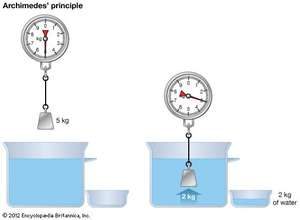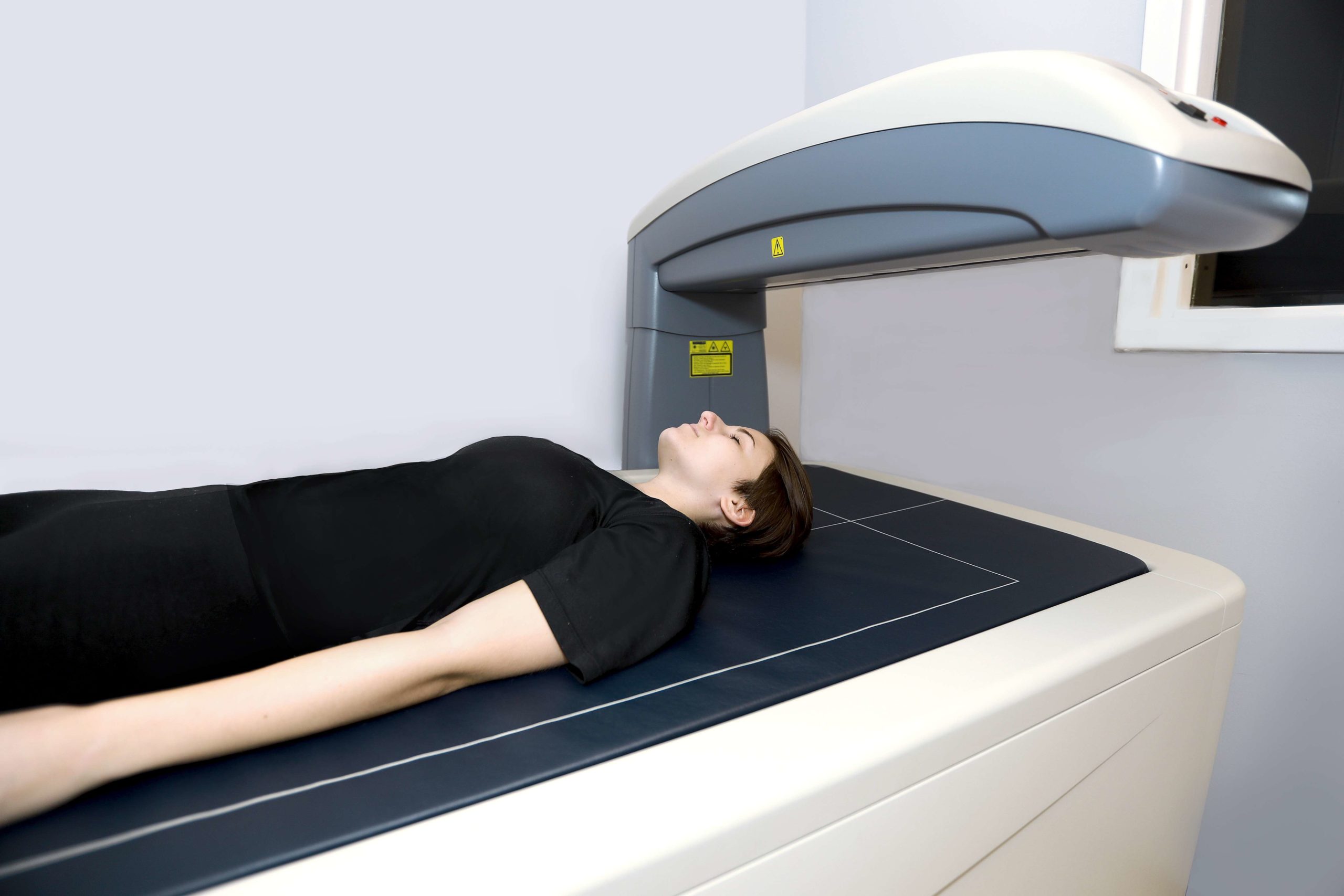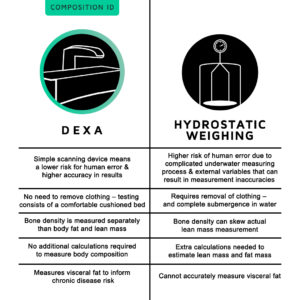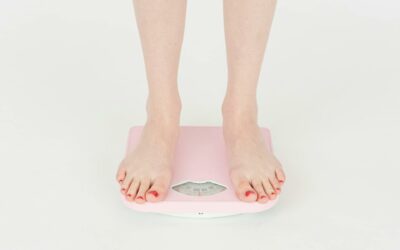Science and technology is extraordinary, especially when it comes to understanding the body. Several forms of body composition analysis testing have been developed over time that provide a glimpse into the body’s tissue makeup. Hydrostatic weighing is an early technique in body composition analysis that, at the time, used the most sensible concepts to measure body fat and lean mass. But times have changed with the advent of new technology and perspectives in science.
Since the early ages, humans have cultivated a deep curiosity around what lies beneath the skin. As scientists began to dive deep (literally) into the different tissues, organs, and fluids that keep our bodies in motion, methods of measurement were derived in an attempt to gather information accurately and consistently. The early mathematician, Archimedes, posed a key theory in physics that provided the foundation for body composition analysis. This theory of displacement states “that any body completely or partially submerged in a fluid (gas or liquid) at rest is acted upon by an upward, or buoyant, force the magnitude of which is equal to the weight of the fluid displaced by the body.” From this concept, the early method of body composition calculation called hydrostatic weighing emerged.
What is Hydrostatic Weighing?

Source: Encyclopedia Britannica
Hydrostatic weighing borrows Archimedes’ principle in physics to measure body fat and lean mass through full underwater submergence. In the case of body composition testing, lean mass is denser than water, while fat mass is less dense than water. Therefore, a person with more fat will weigh less under water than someone with more muscle. Testing requires a participant to be lowered underwater with all air expelled from their lungs to gather measurements of water displacement. The process is usually repeated three times, with calculations from each measurement averaged to determine total fat mass, lean mass and body fat percentage.
How Accurate is Hydrostatic Testing?
The principle of hydrostatic weighing is technically accurate – that is, if all methods and calculations are correctly implemented, an accurate read of body fat and lean mass can be determined. However, several variables can be sources of error, such as the subject not expelling all of the air out of their lungs, or if the individual completing the test is not accurate with calculations. Bone density can also skew actual results.
DEXA Technology vs. Hydrostatic Testing
As society progresses, so does science. Discoveries in technology are constantly reinventing traditional methods of testing protocol and measurements across almost all industries. The same advent of technological breakthroughs is also experienced in health.
Over the past half-century, other forms of body composition testing were developed that used a different approach based on more cutting edge body imaging technology. Most notably, X-ray imaging devices opened a new door to body composition analysis. DXA technology (dual-energy X-ray absorptiometry) uses two X-ray beams with different energies and projects them onto a patient’s body through a full-body scanning device (DEXA scan) to provide a complete picture of body composition. This method differs from hydrostatic testing in a few major ways.
Accuracy
A DEXA scan has a very low error rate of 1-2%, compared to 5-15% for most methods. This is due to the advanced X-ray technology that leave little guesswork and no extra calculations to provide accurate data. Unlike hydrostatic weighing, there is no need to expel air, remove clothing or do any type of preparation before a DEXA scan.
Regional Analysis
Most methods of body composition testing only provide a reading of total body fat and lean mass. DEXA offers a comprehensive regional analysis across all major areas of the body, which gives clients specific information on their fat and lean mass distribution. This can help point out muscle imbalances and inform physical training interventions, if needed.
Bone Density & Visceral Fat Measurement
A main piece of information that is missing from hydrostatic weighing is its ability to measure bone mineral content, or bone density. During a DEXA scan, however, soft tissue absorption is subtracted from full-body tissue absorption to estimate a measurement of bone density. Access to bone density information is crucial in assessing a potential risk of osteoporosis (especially in older populations), should a scan indicate lower than average bone mineral content.
A DEXA scan can also measure visceral fat, or the fat around the internal organs. This is particularly important in assessing risk of chronic disease such as cardiovascular disease, diabetes and cancer. Access to this type of information brings even more value to a DEXA scan than just body fat and lean mass measurements – it can be the difference in whether or not to intervene with potentially lifesaving lifestyle behavior changes.
Convenience
The hydrostatic weighing method comes with a few inconvenient steps – removal of clothing, expelling all air and holding the breath, and complete underwater submergence. During a DEXA scan, any type of clothing can we worn and the subject lays comfortably on a flat-bed device for under 10 minutes. A full report is generated moments later, without the need for extra calculations that may be impacted by human error.
Hydrostatic weighing uses physics-based approach to body composition testing that, while seeped in history and tradition, may lead to less accurate results when compared to imaging-based tests like a DEXA scan. A DEXA scan also offers more information on bone density, visceral fat and regional body analysis that hydrostatic testing does not provide.
To learn more about your own body composition and overall health, schedule a DEXA scan and talk to a Nutrition Coach at a Composition ID location near you.




